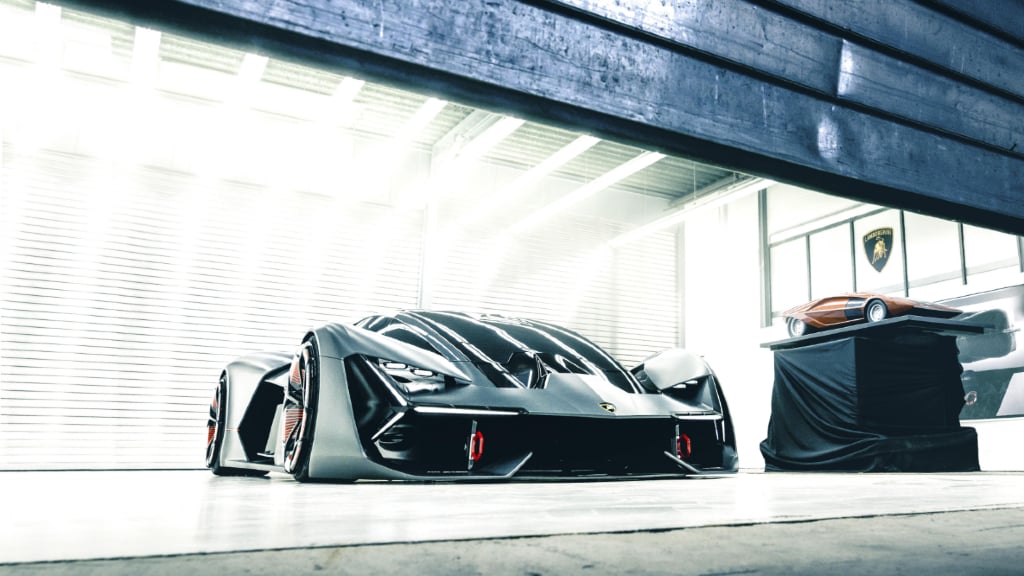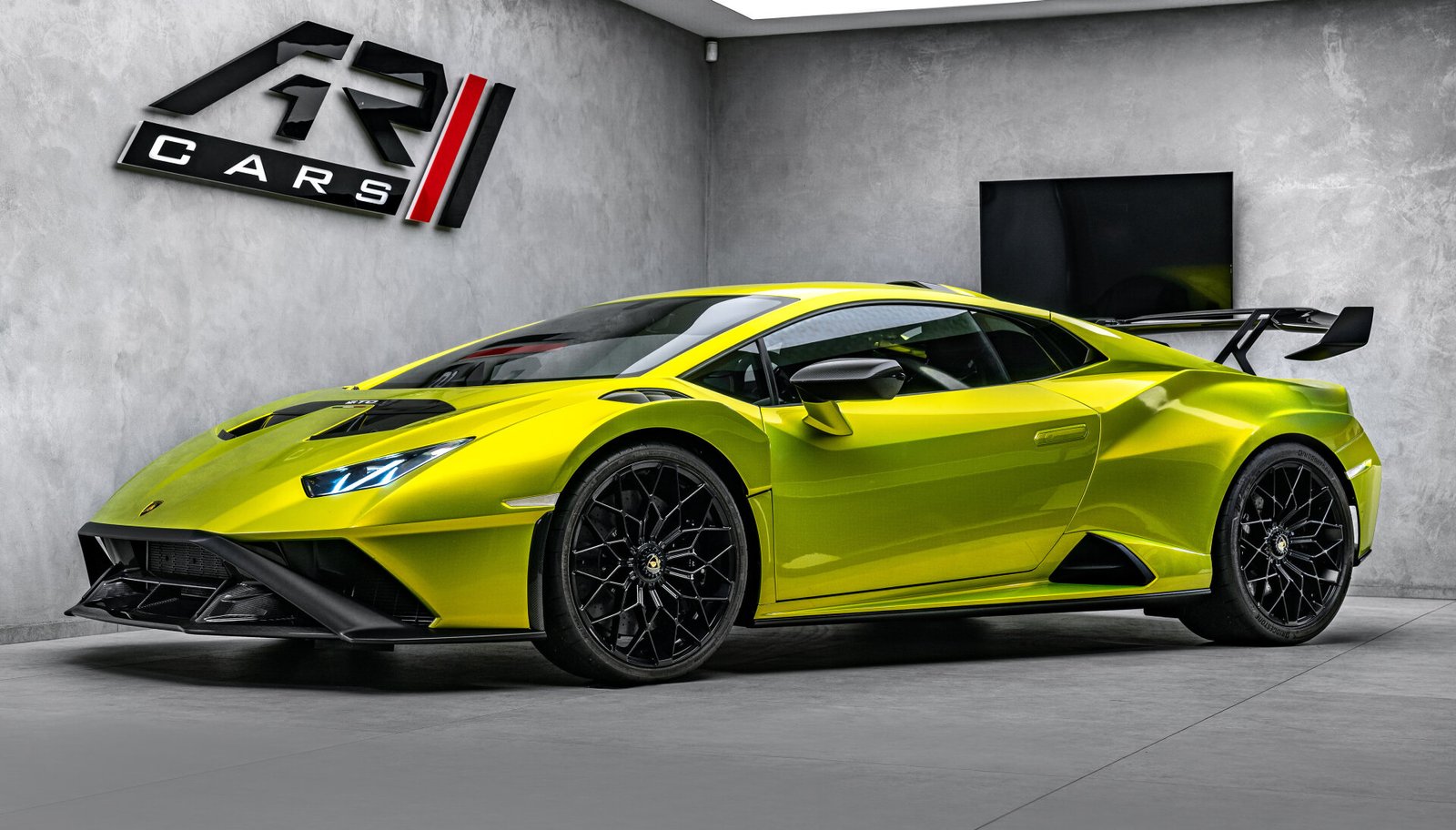I. Introduction
Lamborghini Huracán Advanced Safety Technology: The Lamborghini Huracán is a marvel of automotive engineering, blending exhilarating performance with cutting-edge design. While its powerful engine and sleek aesthetics often steal the spotlight, the importance of safety technology in high-performance vehicles cannot be understated. As drivers push the limits of speed and handling, advanced safety features become essential in ensuring both performance and protection.
II. Key Safety Features

Active Safety Systems
The Huracán is equipped with a range of active safety systems designed to prevent accidents before they occur. One of the standout features is its adaptive cruise control, which automatically adjusts the vehicle’s speed to maintain a safe distance from the car ahead. This system enhances driver comfort on long journeys and reduces the risk of rear-end collisions.
Passive Safety Features
In the event of an accident, passive safety features play a critical role in protecting occupants. The Huracán incorporates crumple zones that absorb and dissipate energy during a collision, significantly reducing the force experienced by passengers. Additionally, a comprehensive airbag system deploys strategically to shield occupants from impact, providing an extra layer of security.
III. Advanced Driver Assistance Systems (ADAS)
Lane Departure Warning
The Huracán’s lane departure warning system actively monitors lane markings and alerts the driver if they inadvertently drift out of their lane. This feature is particularly beneficial during long drives, helping to prevent fatigue-related accidents.
Blind Spot Monitoring
With its low-profile design, visibility can be a challenge in the Huracán. To combat this, the vehicle is equipped with blind spot monitoring. This system provides real-time alerts to the driver when another vehicle is in their blind spot, enhancing safety during lane changes.
Parking Assistance
Parking a supercar can be daunting, but the Huracán’s parking assistance features simplify the task. The system uses sensors to detect obstacles, providing audio and visual cues to help the driver navigate tight spaces safely.
IV. Structural Integrity

Chassis Design and Materials
The Huracán’s chassis design prioritizes both performance and safety. Constructed from lightweight yet robust materials such as carbon fiber and aluminum, the vehicle maintains its agility while enhancing crashworthiness. This engineering approach ensures that the car can withstand significant impacts without compromising occupant safety.
Roll Cage and Reinforcements
In addition to its advanced materials, the Huracán features a well-designed roll cage that reinforces the vehicle’s structure. This cage plays a vital role in protecting occupants during rollovers, ensuring that the integrity of the passenger compartment remains intact in the event of a crash.
V. Braking and Stability Control
Advanced Braking Systems
The Lamborghini Huracán is equipped with advanced braking technology, including carbon-ceramic brakes. These brakes not only offer exceptional stopping power but also maintain performance under high temperatures, making them ideal for track use. This technology enhances overall safety by reducing the distance required to bring the car to a halt.
Electronic Stability Control (ESC)
To further enhance control, the Huracán incorporates electronic stability control (ESC). This system monitors the vehicle’s behavior and can intervene by adjusting brake force to specific wheels, helping to prevent skidding and loss of control during high-speed maneuvers.
VI. Technological Innovations

Integration of Smart Technologies
The integration of smart technologies is a hallmark of modern vehicles, and the Huracán is no exception. Utilizing AI and machine learning, the vehicle continually learns from driver behavior and road conditions, allowing it to adjust its safety systems dynamically for optimal performance.
Real-time Monitoring Systems
Real-time monitoring systems in the Huracán track various aspects of vehicle performance, including tire pressure and engine status. By providing the driver with critical information, these systems can help prevent issues before they escalate, further enhancing safety on the road.
VII. Safety Ratings and Standards
The Lamborghini Huracán has received commendable safety ratings from various automotive safety organizations. When compared to competitors in the supercar segment, the Huracán consistently stands out for its advanced safety features and robust construction, providing drivers with peace of mind as they unleash its power.
VIII. Conclusion
The Lamborghini Huracán is not just about speed and performance; it embodies a commitment to safety through advanced technology. From active systems that help prevent accidents to robust structural integrity that protects occupants in emergencies, the Huracán offers a comprehensive safety package. As drivers experience the thrill of driving a supercar, they can do so with the assurance that cutting-edge safety features are working tirelessly to keep them secure.
IX. Call to Action
For those intrigued by the Lamborghini Huracán and its impressive safety technology, consider exploring further on Lamborghini’s official website or visiting a dealership. Experience firsthand the blend of performance and safety that defines this iconic supercar.
FAQs about Lamborghini Huracán Advanced Safety Technology
1. What types of safety features does the Lamborghini Huracán have?
The Huracán includes a variety of safety features, such as active safety systems (like adaptive cruise control and lane departure warning), passive safety features (like airbags and crumple zones), and advanced driver assistance systems (ADAS) including blind spot monitoring and parking assistance.
2. How does the adaptive cruise control work?
Adaptive cruise control automatically adjusts the vehicle’s speed to maintain a safe distance from the car ahead. It uses sensors to monitor the traffic conditions and can slow down or speed up as needed, providing a more relaxed driving experience.
3. What materials are used in the Huracán’s construction to enhance safety?
The Huracán’s chassis is constructed from lightweight yet durable materials, primarily carbon fiber and aluminum, which enhance both performance and crashworthiness.
4. How does the blind spot monitoring system function?
The blind spot monitoring system uses sensors to detect vehicles in the driver’s blind spots. If a vehicle is detected, the system alerts the driver with visual or audible warnings, making lane changes safer.
5. Are there any unique structural features in the Huracán that improve safety?
Yes, the Huracán features a reinforced roll cage designed to protect occupants during a rollover accident. The crumple zones also absorb impact energy, helping to safeguard passengers.
6. What role does electronic stability control (ESC) play in the Huracán?
ESC helps maintain vehicle control during dynamic driving situations. It monitors the car’s behavior and applies brake force to individual wheels if it detects skidding or loss of traction, thereby preventing accidents.
7. How do the carbon-ceramic brakes enhance safety?
Carbon-ceramic brakes provide exceptional stopping power and resist brake fade even under extreme conditions, allowing the Huracán to stop more quickly and safely than traditional brakes.
Tips for Maximizing Safety in Your Lamborghini Huracán
- Familiarize Yourself with Safety Features: Take the time to understand all the safety systems in your Huracán, including how to activate and utilize them effectively.
- Regular Maintenance Checks: Ensure that your vehicle is regularly serviced. This includes checking brakes, tires, and electronic systems to keep everything in optimal condition.
- Utilize Driver Assistance Features: Don’t hesitate to rely on features like lane departure warning and parking assistance, especially if you’re not accustomed to driving a supercar.
- Stay Aware of Road Conditions: Always be mindful of the road and weather conditions. The Huracán is designed for performance, but it’s crucial to adjust your driving style based on external factors.
- Practice Defensive Driving: Even with advanced safety features, practicing defensive driving techniques can help you anticipate and react to potential hazards on the road.
- Keep Your Focus: Limit distractions while driving. The powerful capabilities of the Huracán require your full attention to navigate safely.
- Educate Passengers: Ensure that any passengers understand the safety features of the Huracán and how to behave while driving a high-performance vehicle.
- Join Driving Courses: Consider enrolling in advanced driving courses that specialize in high-performance vehicles to better understand the handling and safety features of the Huracán.
